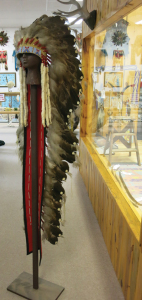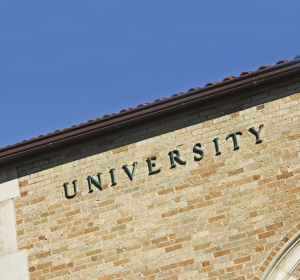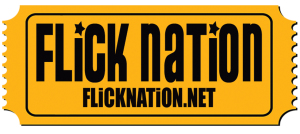Danville’s Blackhawk Museum, which exhibits some of the world’s rarest classic automobiles, has acquired an extensive private collection of American West and Plains Indians historic artifacts for a new permanent exhibition titled, “SPIRIT OF THE OLD WEST,” to open in late fall.
This vast collection of Western and American Indian artifacts has remarkable historic importance. The all-encompassing collection is representative of Plains Indians and the Pioneering Settlers that will take viewers through a portal to the past of America’s Old West history.
Among the rarest objects in the Plains Indian collection are authentic mounts of a 19th century American eagle, a massive Plains buffalo, as well as bear and wolf specimens. Indian Tribes revere Mother Earth, nature, and animals, all of which have sacred significance in their animist cultures.
The extensive exhibit of American Indian and Settler artifacts will offer educational insight into the “Wild West’s” rich past and promises to be one of California’s most popular attractions for adults and school children. Museum docents will bring history alive for visitor tours, adding to the learning experience.
The Blackhawk Museum is presently accepting applications for interested volunteer docents, an integral part of the museum experience, who will share their knowledge on guided tours for children and adult visitors. After training, the docents will bring history to life by guiding tours and children’s hands-on activities to enhance the early California experience.
The multiple exhibits on display will explore how one culture waned while another thrived due to the momentous treks westward in search of land, riches, and a better life. The pioneers’ arduous westward journeys across America were to be one of the greatest migrations in human history as men, women, and children trekked through rivers and across unchartered wilds in unwieldy wagons.
“Excitement is building for the upcoming Spirit of the Old West exhibition, and has already generated great interest among educators,” David Behring said after making a recent presentation to the county’s school principals. “I envision field trips early next year”, Behring added about the exhibition space designed by the Pleasanton-based Dahlin Group.
Ken Behring, founder of the Blackhawk Automotive Museum in 1988, negotiated the acquisition of the “Fick Collection” assembled by Jerry Fick’s American Indian family over many generations. “There is no other American Indian collection of this scope in California; I made the decision to bring it to Blackhawk in less than a day,” stated Behring.
Among the premier collection of American Indian memorabilia in “The Spirit of the Old West” installation are rare 18th and mid-19th century feather headdresses. The iconic “eagle feather bonnets” are cultural treasures inherent to Native American cultures. The plumage tells that “feather bonnets” were only presented to the bravest warriors, and each feather represented a courageous deed.
THE CLASH OF CULTURES
The Plains Indians were made up of several indigenous tribes, their migrations spanning many Western states, and consisting of multiple sub-groups; Arapaho, Lakota, Crow, Cheyenne, Blackfoot, Apache, Pawnee and others.
Among the artifacts of historic significance spanning several disciplines of their cultural identity are; eagle feather bonnets, buffalo horn headdresses, cradleboards, lances, war shields, feathers, porcupine quills, and bead-embellished buckskin garments, ceremonial pipes, bear claw necklaces, moccasins, tools, points, tomahawks and Indigenous Peoples’ stone tools dating to circa BC 8,000.
The Culture of the Old West will be contextualized in the heart of the museum exhibits that will include all aspects of the human presence in the West; Early Reservations of Plains Indians 1860-1910; Cowboys; Homesteading Settlers/Pioneers; Cavalry/Military firearms and weaponry; Trappers and Wagon Trains.
To guarantee attention to the historic synergy between Indians and Settler Pioneers, the new installation will ricochet between both cultures by featuring sections dedicated to American Indians and the Migrating Settlers. On the left side of the 27,000 square foot upper gallery, the American Indians will be thematically featured with an authentic tipi and accoutrements.
On the right side a covered wagon, “Prairie Schooner” will highlight the chronology of the Pioneers’ westward expansion and focus on the intrepid determination of people seeking opportunity and a new life.
The exhibition will highlight historic objects affirming the region’s tumultuous history, and the First Peoples’ forced dispersion into scattered reservations, and mythologized Wild West folklore.
No amount of storytelling or Hollywood movies could ever convey the sheer drama of what actually happened, portray stark hardships, or tell of the families’ anguish on the westbound wagon trains who buried their children along the way. When we hear the docents’ tours and see authentic artifacts that belonged to those very people we may better imagine their stories as we travel to the past.
And many more stories will be told through the collection of 19th century photographs that portray Plains Indians, the pristine mountains, and untrammeled wilderness of the American West as it was before the settlements, and before the scars of mining and farming.
Historic themes of the ever-migrating and intrepid tribes on our ancient landscape, and the subsequent interaction during the westward expansion of heroic cowboys, pioneers, and cavalry legends will evolve to a visually-rich and tangible 21st century experience at the Blackhawk Museum.
To anchor the history of American Indians and the Old West, a 140 foot long centerpiece of three-dimensional topographical dioramas will visually portray their life in miniature and enhance the 18th to 20th century experience. Momentous events will highlight America’s Western history, including the turning point of Custer’s Last Stand at the Battle of Little Big Horn, the discovery of gold, and the impact of the transcontinental railroads.
BLACKHAWK AND DANVILLE HISTORY
Ken Behring not only founded the Blackhawk Museum, but also developed the world-class Blackhawk residential community over 40 years ago. With forward-looking vision and strong philanthropic ideals, he strove to add to the historical culture of the San Ramon Valley.
Behring spearheads the construction of thirty Natural History Museums in China to promote them as places of learning. He built the Blackhawk Museum to showcase a world-class auto collection, and partnering with the Smithsonian, also featured art, science, and history. “I like to stress leadership qualities; societies cannot survive without it. The American Indian Chiefs were great leaders too, their people revered them,” Ken Behring made his point by referring to the words of Crazy Horse, Sioux Chief; “A very great vision is needed, he who has it must follow it as the eagle seeks the deepest blue of the sky.” 
The Behring Family believes in philanthropic leadership and with close affiliation to the Smithsonian Institution in Washington DC, succeeded in bringing President Abraham Lincoln’s iconic top hat to the Museum. Behring’s leadership radiates across our nation; the Smithsonian’s Museum of American History is named to honor the philanthropy of the Kenneth E. Behring family.
In 1975 when Behring bought approximately 5000 acres of prime Danville land to develop Blackhawk, he donated a large parcel to Regional Open Space and Mount Diablo State Park with the objective of preserving the rich history of the San Ramon Valley.
In keeping with his philanthropic works, Behring founded the Wheelchair Foundation and has nearly met his lofty goal of donating one million wheelchairs to people in need of mobility all over the world.
San Ramon Valley bustled in mid-19th century, the catalyst being the Gold Rush when Easterners flocked here by the thousands. When news radiated that rich gold deposits were in the California hills; first came the wagon trains, and then came the trains. Intrepid families came in search of riches and a new life, and thus begun the evolution of the American West.
Trekkers from Eastern cities or ghost towns like Deadwood, Dakota settled in California; bankers and bakers, frontiersmen, buckaroos, vaqueros, gunslingers, gunfighters, trappers and cowboys. When wagon trains encountered the Indians along the way, cultures clashed and the harmony of the plains was disrupted forever. We will learn how the cultures clashed, the ways of the Wild West, and how it really was way back then.
Ken Behring and family have brought “The Spirit of the Old West” to the Blackhawk Museum to share with historians, teachers, children, and those who yearn to take a long glance back into Wild, Wild West history.
We may not hear all the thrilling stories of the pioneers, gold seekers, gunslingers, or American Indians, nor encounter the ghosts of Billy the Kid, General Custer, Wild Bill Hickok, Doc Holliday, Wyatt Earp, or Kit Carson, but we may learn about such American Indians who compare to Chiefs Joseph, Cochise, Crazy Horse, Sitting Bull, Geronimo or Black Hawk.
America’s “Spirit of the Old West” will come alive with the historic exhibition of antique artifacts and memorabilia at the Blackhawk Museum featuring American Plains Indians, settlers, cowboys, and gold seekers who became linked to the land and built the Wild, Wild West thus earning a major role in California’s mystery, myth, and history.
Info: Blackhawk Museum, 3700 Blackhawk Plaza Centre, Danville California. 94506 925.736.2280. www.blackhawkmuseum.org/ email: info@blackhawkmuseum.org



